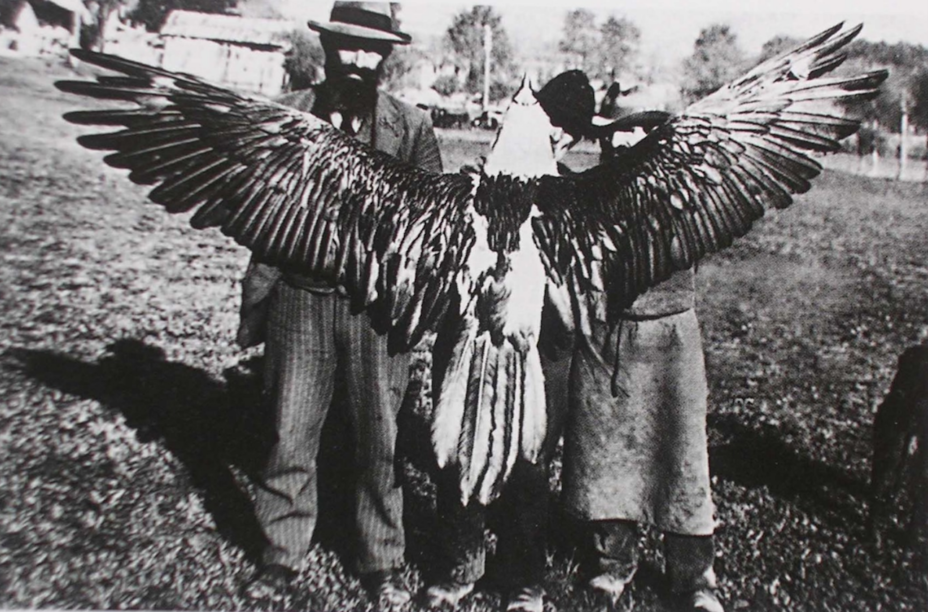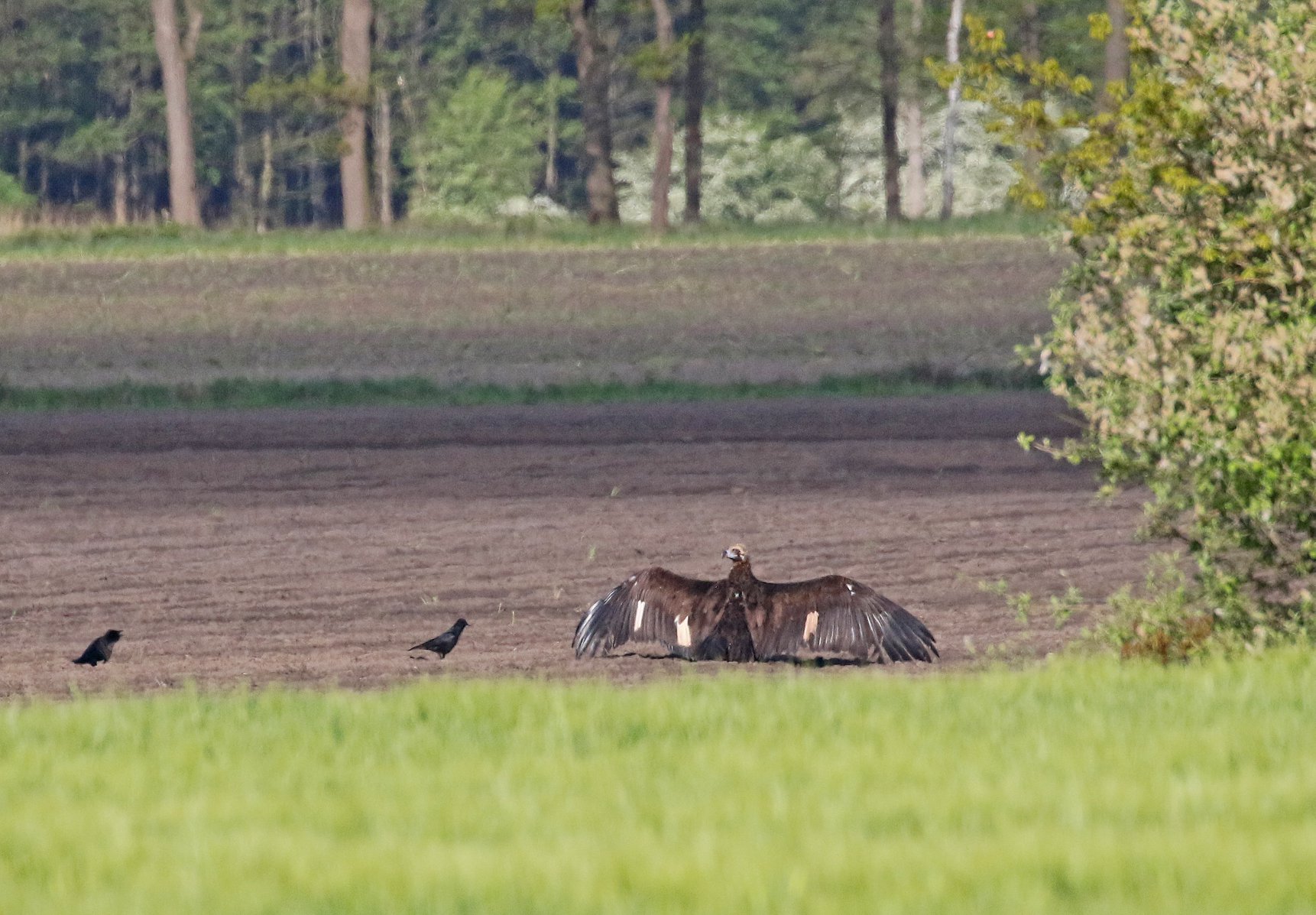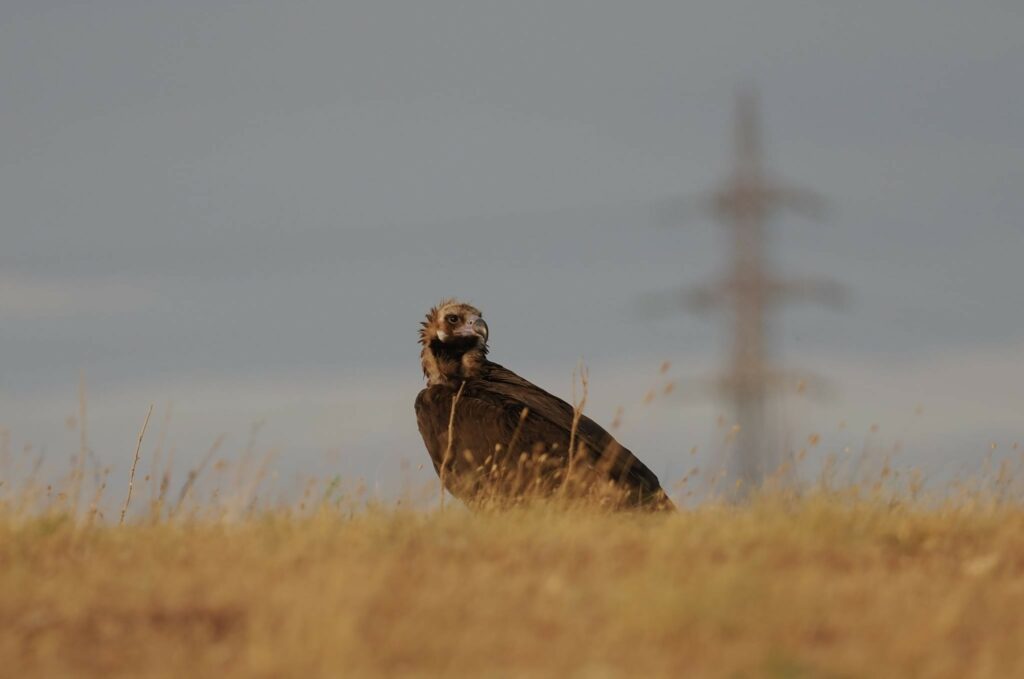
The silhouette of Europe’s largest vulture is a familiar sight to ornithologists in Spain but a much rarer sight across northern Europe, that was until Brínzola, a female Cinereous Vulture, was spotted travelling through northern Europe. There was first much excitement as she traveled across Belgium and Holland then onto Germany at the beginning of May. But now she is heading north, first Denmark, then Sweden and now on Tuesday 21 May she is currently in Norway.
Who is Cinereous Vulture Brínzola?
There was much excitement at the sighting of Brínzola in Holland, making her the fourth Cinereous Vulture to be spotted in the country. But where did she come from? Brínzola is a three year old wild-born bird who was rescued in the city of Palencia in northern Spain in 2016 soon after fledging the nest after becoming exhausted and spent two years in a wildlife rehabilitation centre in Valladolid.

In October 2018 Brínzola was released back into the wild in Huerta de Arriba, Burgos in the Spanish region of Castile and León as part of the conservation project Proyecto Monachus led by non-governmental wildlife organisation GREFA to reintroduce the Cinereous Vulture to area, in between the Pyrenees and western Spain where most Cinereous Vultures live.
Cinereous Vulture Brínzola in the Huerta de Arriba, Burgos during her first winter
From Spain to Holland

After spending her first winter after being released in the Sierra de Madrid, Brínzola was spotted near her release site at Huerta de Arriba, Burgos around 20 April 2019. She stayed a few days before she dispersed on a journey that would take her some 3,000km away from her Spanish home. She first moved to the Basque Country at the end of April before spending three days crossing the entire Pyrenean mountain range from west to its most eastern end, near Figueras, from where she crossed the border into France on 27 April.
She then headed north to the Auvergne region and turning west to the Atlantic coast around the city of Bordeaux on April 30. Incredibly, she carried on northwards arriving in the Paris region on Monday 6 May spending the night in the Picardy region before crossing into Belgium on 7 May. Brínzola becomes only the second ever Cinereous Vulture recorded in Belgium and created much media interest and excitement among the ornithology community in the country.
Brínzola spotted in Holland (c) Filip De Ruwe, Marc Van Daele and Wouter Van Gasse
She entered Holland on Thursday 9 May flying through Luyksgestel and Bergeijk at around 5pm and traveled through the country. Based on the movements of the three other Cinereous Vultures that have visited Holland Brínzola is likely to carry on her spring wanderings and we’ll keep you up to date where her travels take her next.
More photos of her recent travels can be found on the birding site observations.be .
The team at GREFA have been monitoring her movements closely and were concerned that she had not eaten for several days. However, colleagues all across her journey from organisations such as France’s LPO have checked on the bird. The Cinereous Vulture European Endangered Species Programme co-ordinator and Vulture Conservation Foundation Advisory Board member Marleen Huyghe, who is based at the Belgium Zoo Planckendael, has also been working closely with ornithologist colleagues on the ground to monitor the bird’s health.
Update 11/05/19 – And now in Germany

Vulture Conservation Foundation Management Board member based in Holland, Hans Pohlmann left early in the morning on Friday 10 May to locate the bird, but sadly missed her as she had continue her journey, this time heading north east and entering Germany. traveling over 100km in just a few hours. Hans Pohlmann carried on his search and photographed her in Germany. And it seems she is not alone, there are reports of another Cinereous Vulture in Germany at the moment suspected to be also from Spain.
Update 21/05/19 – A Scandanavian adventure

After heading into Germany Brínzola traveled north to the Germany’s Baltic coast traveling over 250km in just five hours. Thankfully Brínzola finally managed to feed during this epic, local ornithologist Arne Torkler observed her feeding on the remains of a deer.
Brínzola photographed in Germany (c) Arne Torkler
A risky sea crossing
On Monday 13 May, Brínzola made what is perhaps the riskiest part of her travels so far, making her first sea crossing, a trip that had the team from GREFA very concerned for her safety, she left Germany and cross into Denmark over the Baltic Sea. The journey of 50km took her over the Strait of Fehmarn, connecting the Bay of Kiel and the Bay of Mecklenburg in the western part of the Baltic Sea between the German island of Fehmarn and the Danish island of Lolland. During the flight Brínzola left Germany at a good altitude but descnded quickly according to the GPS transmitter and was at real risk of falling into the water, but probably thanks to atch an upward air stream makes it to the Danish coast at a good altitude of 433m.
Denmark, Sweden and Norway

After making it to Denmark Brínzola traveled into Sweden she stopped to spend the night near the town Almhult. On Wednesday 15 May she she continued her journey, flying over the city of Växjö, 40 km north of this Almhult.

On Thursday 16 May she was in the surroundings of the population of Ludvika, about 120 km from the Norwegian border, at an equidistant point between the capitals of Sweden and Norway, Stockholm and Oslo and after spending the night in a forest near the Swedish town of Öje she heads northwestward, crossing the border into Norway on Saturday 18 May.

Loc
al ornithologists over the weekend 18 and 19 May managed to observer her and reported she was in good health and even spotted her feeding, on a reindeer, possibly the first record of a Cinereous Vulture feeding on a reindeer!
We look forward to where her travels will take her next.
Proyecto Monachus

Starting in 2007 Proyecto Monachus aims to connect the large natural populations of Cinereous Vultures existing in the center and south of the Iberian Peninsula with other smaller populations in the north. Part of the project was the reintroduction of the species to the Reserva Nacional de Caça de Boumort in the pre-Pyrennees in the Spanish region of Catalonia. Since the project began releasing captive-bred birds and rescued birds from elsewhere in Spain the population has grown to 50 resident birds and 16 breeding pairs which have successfully raised 20 young birds in the last 10 years. The project has also been monitoring the movements of birds in the region by fitting them with GPS transmitters, managing supplementary feeding stations and working with local groups, livestock owners and hunters to raise awareness of the species. A second reintroduction project began in the Sierra de la Demanda in the Burgos of the Spanish region of Castile and León to further connect the populations in southern Spain to the now reintroduced northern population, returning a breeding population to a region where it has been extinct for over 50 years.







